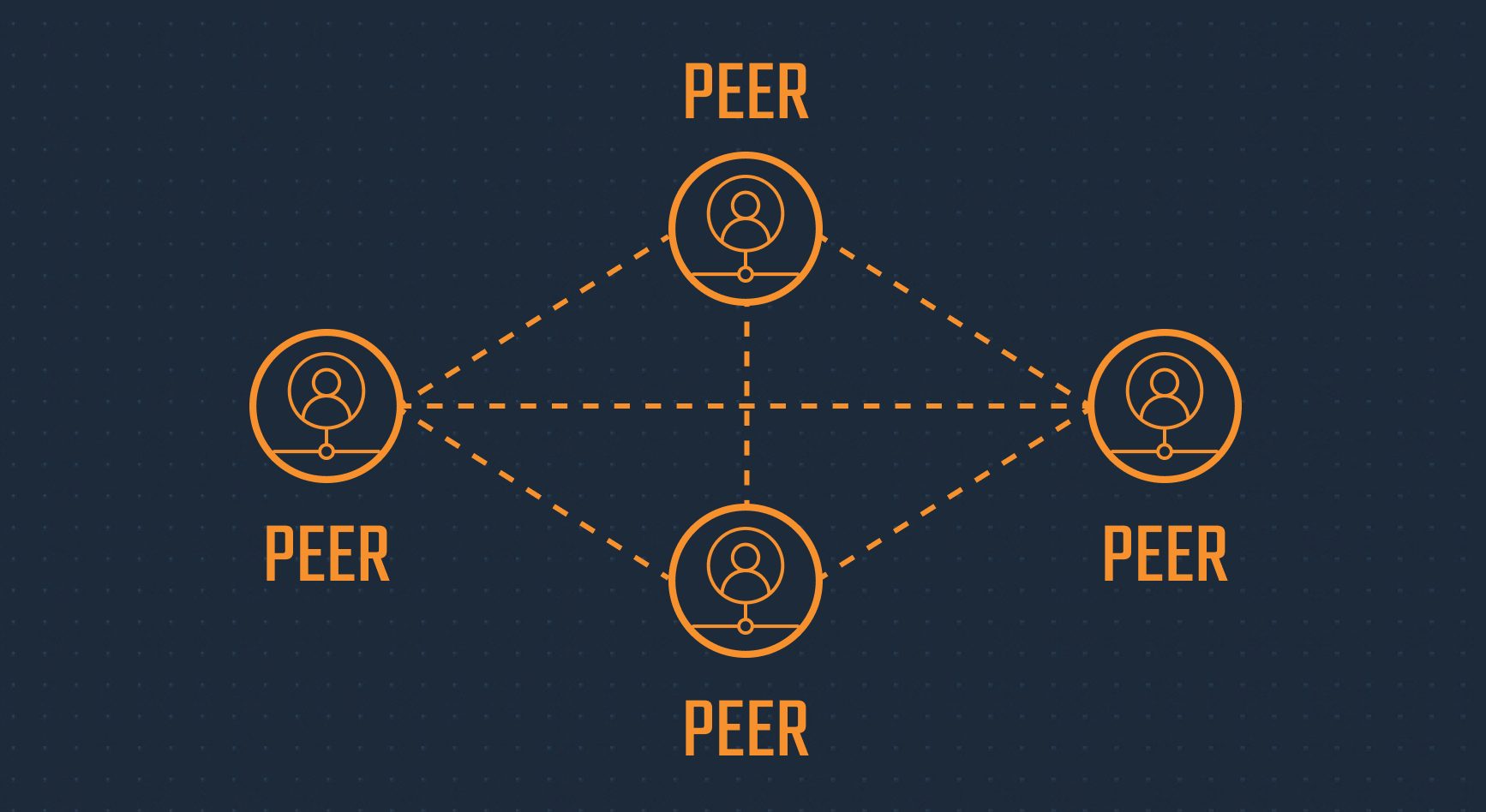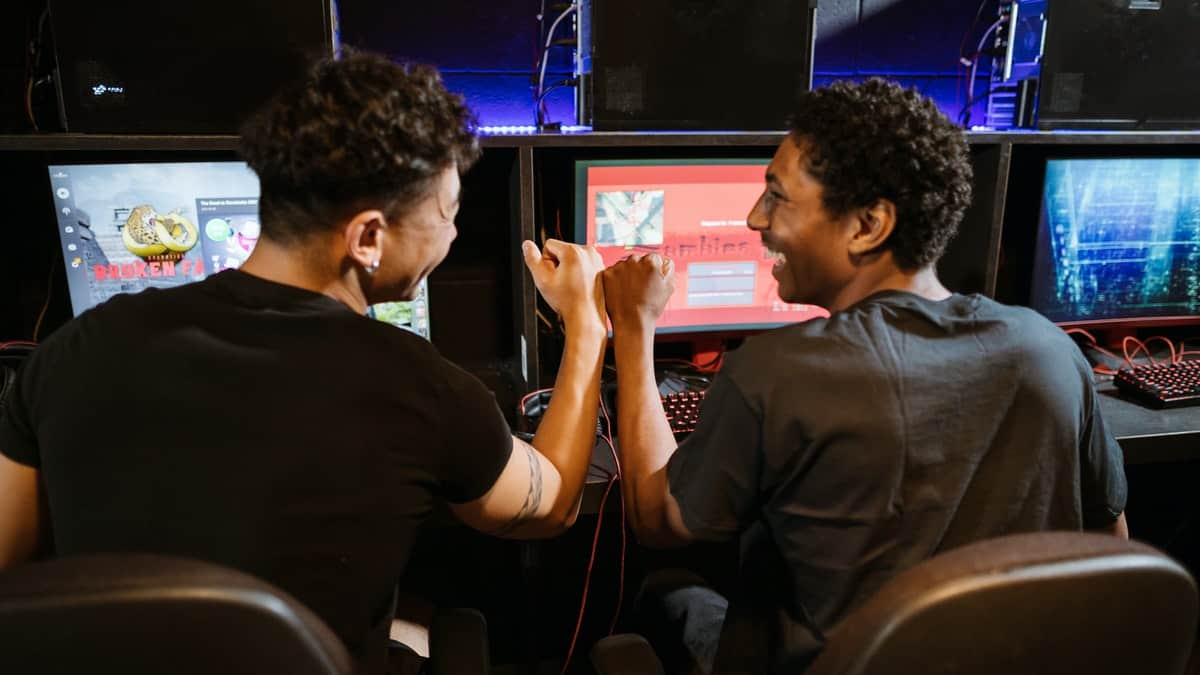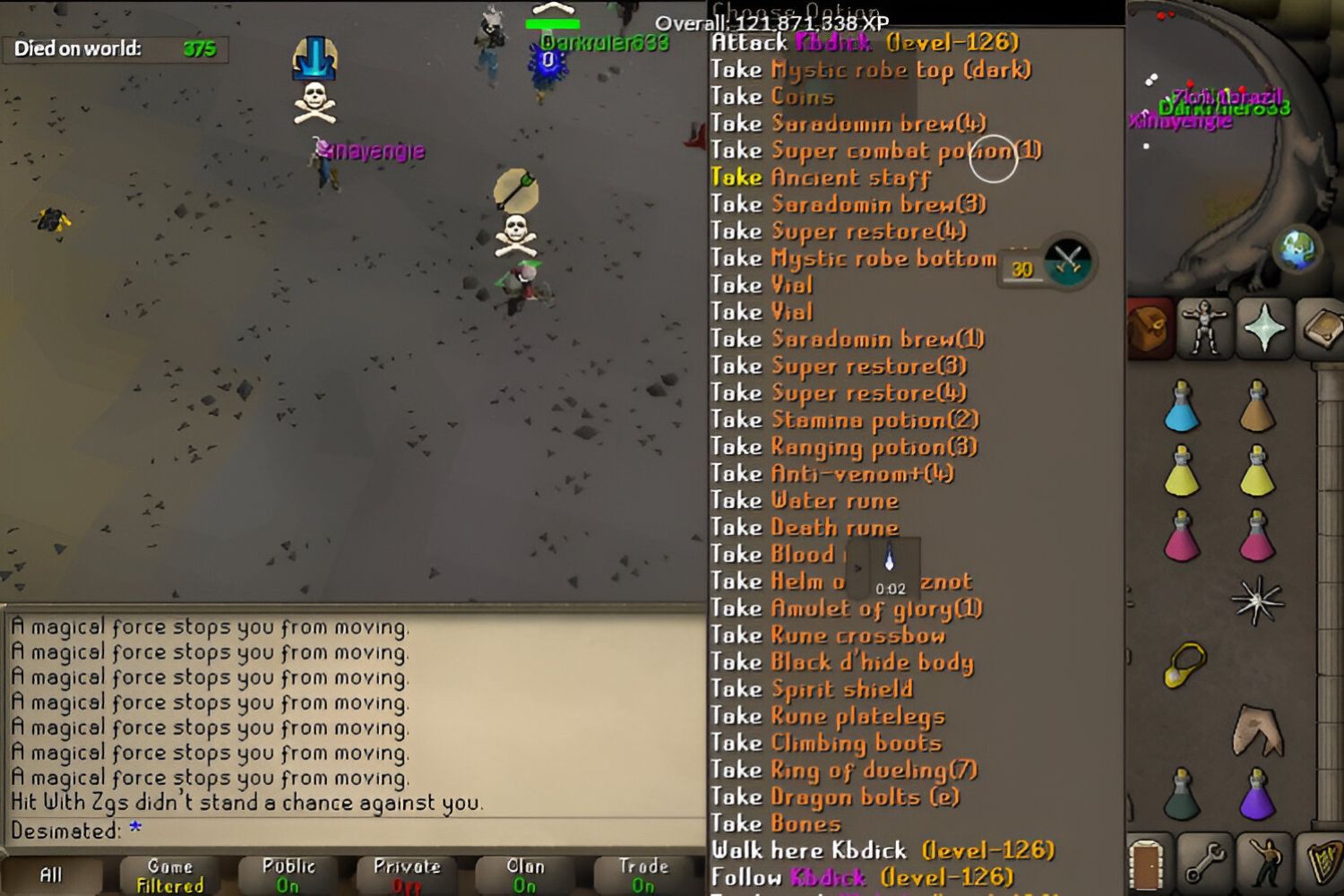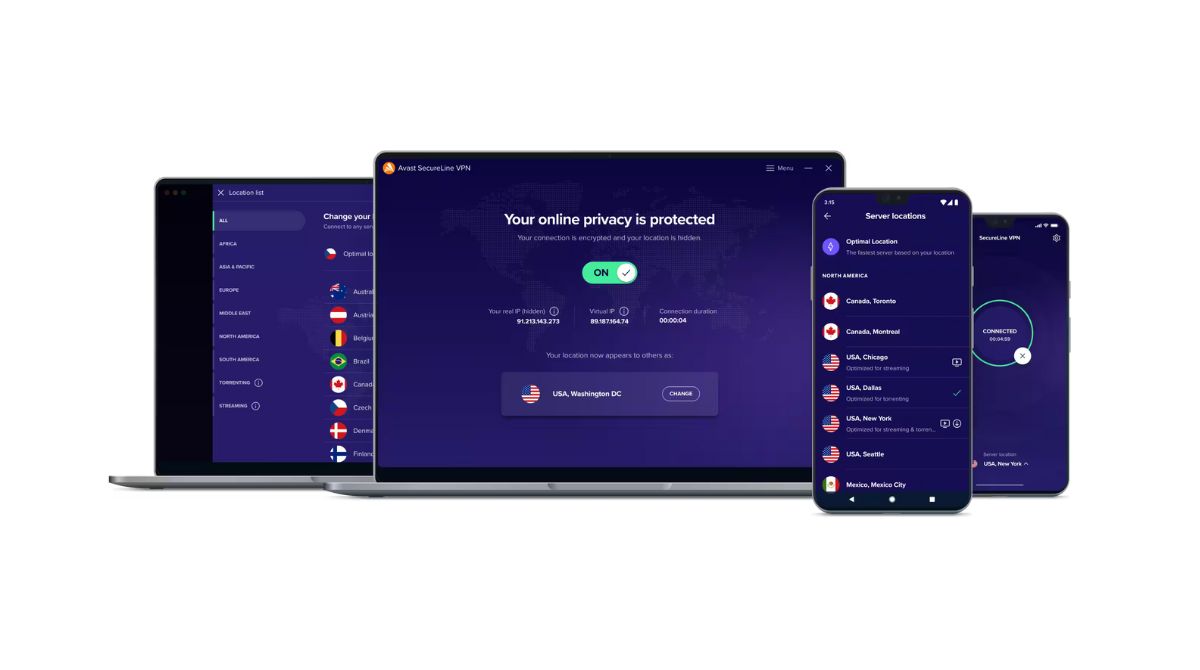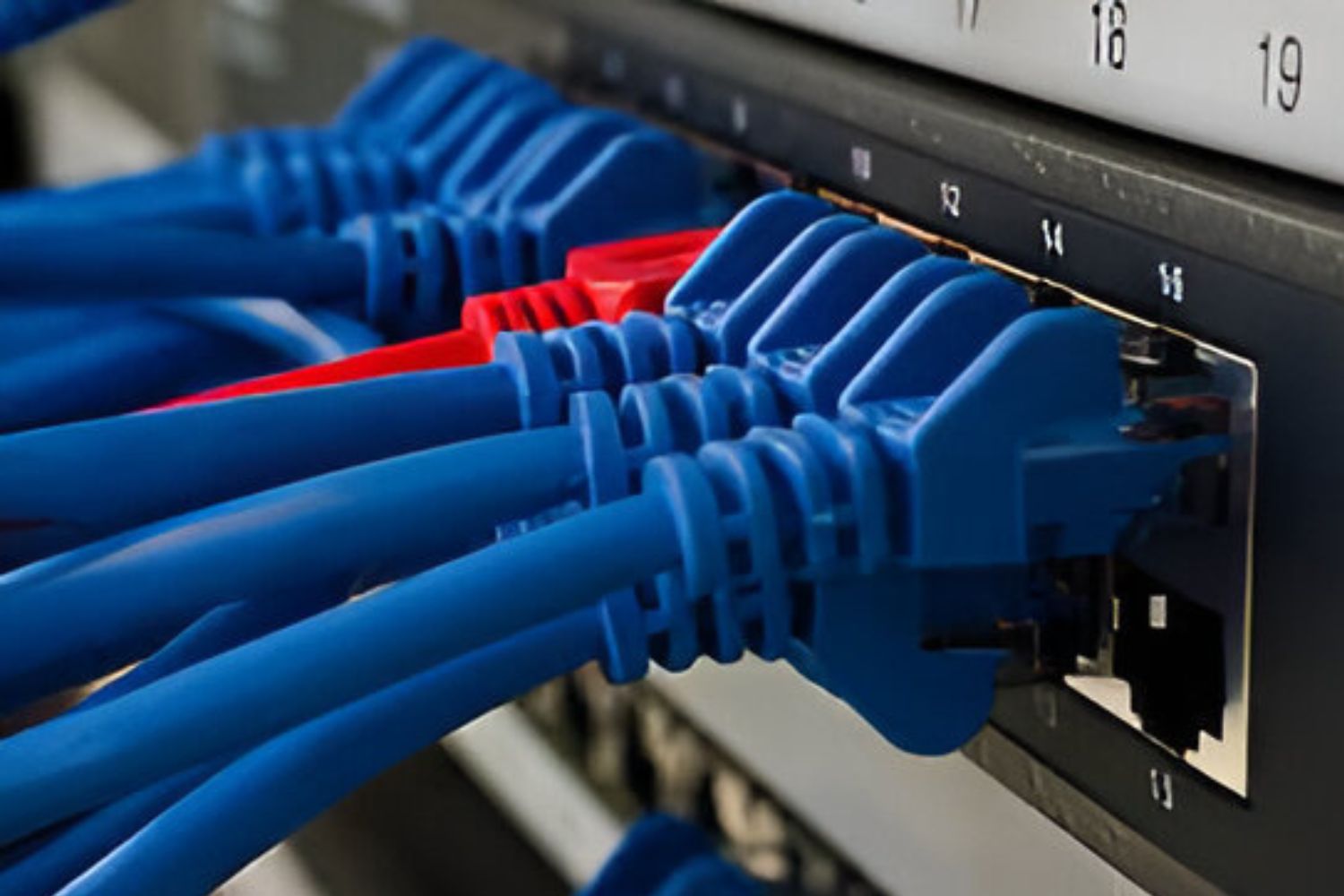Introduction
When it comes to online gaming, multiplayer experiences are highly sought after. Peer-to-peer (P2P) multiplayer, in particular, offers several advantages over traditional client-server-based approaches, such as improved scalability, reduced costs, and increased player engagement. However, implementing and optimizing P2P multiplayer can be challenging, as it requires handling various complexities related to network performance, synchronization, latency, and security.
This article aims to provide valuable insights into improving P2P multiplayer for game developers and network engineers. We will discuss common challenges faced in P2P multiplayer and offer practical tips to enhance its performance and user experience. By implementing these strategies, game developers can create a smooth and enjoyable P2P multiplayer experience for players around the globe.
Understanding the intricacies of P2P multiplayer is crucial for addressing its challenges effectively. With a clear grasp on the topic, developers can proactively optimize network performance, implement effective synchronization mechanisms, handle network disconnections gracefully, reduce latency, and prevent cheating. Additionally, prioritizing security measures is essential to ensure data integrity and protect players from potential vulnerabilities.
Now, let’s delve deeper into the world of P2P multiplayer, explore its challenges, and discover practical tips for enhancing its overall performance and user experience.
Understanding P2P Multiplayer
Peer-to-peer (P2P) multiplayer is a networking model in which players connect directly with each other, rather than relying on a central server. This decentralized approach offers several advantages, including reduced costs, increased scalability, and improved player engagement. In a P2P multiplayer setup, each player acts as both a client and a server, allowing for direct communication and data exchange between participants.
P2P multiplayer is commonly used in various online gaming scenarios, including cooperative gameplay, competitive matches, and virtual worlds. It enables real-time interaction between players, enhancing the sense of immersion and providing a dynamic and engaging gaming experience.
One of the key benefits of P2P multiplayer is its scalability. Traditional client-server architectures can become overloaded when handling a large number of players, leading to performance issues and increased server costs. In contrast, P2P multiplayer distributes the network load, allowing for a more scalable and cost-effective solution. As more players join the game, the burden is shared among the participants, reducing the strain on any single server.
However, P2P multiplayer also presents unique challenges. Unlike client-server models, where a central server can enforce rules and maintain game state, P2P multiplayer relies on each participant to synchronize and communicate effectively. This decentralized nature can introduce complexities related to network performance, synchronization, latency, and security.
To overcome these challenges and ensure a smooth P2P multiplayer experience, game developers must implement effective strategies and optimizations. The following sections will explore practical tips for improving P2P multiplayer, addressing its challenges, and enhancing its overall performance and user experience.
Common Challenges in P2P Multiplayer
Implementing peer-to-peer (P2P) multiplayer comes with its fair share of challenges. Understanding and addressing these challenges is crucial for creating a smooth and seamless gaming experience. Let’s explore the most common challenges faced in P2P multiplayer and how developers can overcome them.
1. Network Performance: P2P multiplayer relies on efficient network communication between players. Ensuring optimal network performance can be a significant challenge, especially when dealing with varying internet speeds and network conditions. Developers should implement network optimizations, such as minimizing data transfer and ensuring efficient data compression, to mitigate performance issues and maintain a responsive gameplay experience.
2. Synchronization: In P2P multiplayer, all players need to stay in sync to maintain a consistent game state. Achieving synchronization among multiple players can be challenging, especially when dealing with latency and varying network conditions. Effective synchronization mechanisms, such as implementing delta compression or interpolation techniques, can help minimize discrepancies between players and ensure a consistent gaming experience.
3. Latency: Latency, or the delay between an action and its effect in the game, can negatively impact the overall gameplay experience. In P2P multiplayer, latency can be affected by various factors, including network distance, internet speed, and processing time. Implementing prediction and interpolation techniques can help reduce the perceptible effects of latency, allowing for a smoother and more responsive gameplay experience.
4. Network Disconnections: The decentralized nature of P2P multiplayer makes it prone to network disconnections. Players may experience sudden drops in network connectivity, leading to interruptions or even game-breaking experiences. Developers should handle disconnections gracefully by implementing features such as connection recovery, automatic reconnection, or pausing the game until the connection is restored.
5. Cheating: P2P multiplayer introduces new challenges for preventing cheating. In a decentralized environment, malicious players can attempt to manipulate game data or gain an unfair advantage. Implementing cheat detection and prevention mechanisms, such as server-side validation and data integrity checks, can help maintain a fair and enjoyable gameplay experience for all participants.
By understanding and addressing these common challenges, game developers can create a seamless and immersive P2P multiplayer experience. The next section will explore practical tips and strategies to improve P2P multiplayer and overcome these challenges effectively.
Tips for Improving P2P Multiplayer
To enhance the performance, reliability, and overall player experience in peer-to-peer (P2P) multiplayer games, developers should implement various strategies and optimizations. Let’s dive into some practical tips that can help improve P2P multiplayer.
1. Optimize Network Performance: Ensure efficient network communication by minimizing data transfer, compressing data where possible, and implementing bandwidth management techniques. This will help reduce network congestion and latency, resulting in a smoother and more responsive gameplay experience.
2. Implement a Robust Synchronization System: Develop a reliable synchronization mechanism to ensure that all players are in sync. Consider using delta compression or interpolation techniques to reduce the impact of latency and varying network conditions. This will help maintain a consistent game state across all participants.
3. Apply Lag Compensation Techniques: Implement lag compensation techniques to account for the delay between player actions and their effects. Techniques like client-side prediction and server reconciliation can help minimize the perceived effects of latency and ensure a more responsive gameplay experience.
4. Handle Network Disconnections Gracefully: Prepare for network disconnections by implementing features such as connection recovery and automatic reconnection. Additionally, consider pausing the game until the connection is restored to prevent unfair advantages or disruptions to gameplay.
5. Use Prediction and Interpolation to Reduce Latency: Use prediction and interpolation techniques to minimize the impact of latency on the gameplay experience. By predicting and approximating the movement of players or game objects, you can reduce the perceived effects of latency and create a more seamless and responsive gameplay environment.
6. Implement Cheat Detection and Prevention Mechanisms: Incorporate cheat detection and prevention mechanisms to maintain a fair gaming environment. Perform server-side validation, utilize data integrity checks, and implement anti-cheat measures to identify and prevent malicious activities that could disrupt the gameplay experience.
7. Prioritize Security and Data Integrity: Protect player data and ensure the integrity of the game by implementing secure communication protocols, encrypting sensitive information, and employing secure authentication and access control measures. Prioritizing security will help maintain player trust and protect against potential vulnerabilities.
By implementing these tips and strategies, game developers can significantly improve the performance, reliability, and player experience in P2P multiplayer games. Taking proactive measures to optimize network performance, handle network disconnections, reduce latency, and maintain security will ultimately create a more enjoyable and immersive gameplay environment for players.
Optimize Network Performance
Optimizing network performance is crucial for ensuring a smooth and responsive peer-to-peer (P2P) multiplayer experience. By reducing network congestion and minimizing latency, players can enjoy a seamless gameplay experience. Here are some strategies to optimize network performance in P2P multiplayer games.
First, minimize the amount of data transferred between players. Consider using network protocols that support efficient data serialization and compression. By reducing the size of data packets, you can reduce the bandwidth requirements and improve network performance.
Next, implement bandwidth management techniques. Prioritize essential data and minimize non-essential or redundant transmissions. By optimizing the usage of available bandwidth, you can reduce network congestion and ensure a more responsive gameplay experience.
Another strategy is to use peer-assisted networking. By leveraging the resources of all participating players, you can distribute the network load more efficiently. In this approach, players can act as temporary data relays, helping to offload bandwidth and reduce the strain on individual connections.
Additionally, consider implementing network prediction techniques. By predicting the movement of players and game objects, you can reduce the impact of latency on the gameplay experience. Predictive algorithms can extrapolate the position of objects based on the current trajectory and velocity, helping to create a smooth and seamless visual experience for players.
Furthermore, utilize content delivery networks (CDNs) to improve network performance. CDNs store game assets, such as textures and sound files, on servers located closer to players, reducing the time required to download and load these assets. This reduces latency and ensures that players can access game content quickly and efficiently.
Lastly, consider implementing connection pooling and recycling techniques. Instead of creating a new connection for each player, recycle and re-use connections when possible. This reduces the overhead associated with establishing and tearing down connections, improving overall network performance.
By implementing these strategies to optimize network performance, P2P multiplayer games can deliver a smoother and more responsive experience for players. Minimizing data transfer, managing bandwidth, employing prediction techniques, utilizing CDNs, and recycling connections are all effective ways to enhance network performance in P2P multiplayer games.
Implement a Robust Synchronization System
In peer-to-peer (P2P) multiplayer games, ensuring that all players are in sync is crucial for maintaining a consistent and fair gameplay experience. Implementing a robust synchronization system helps mitigate issues resulting from latency, network delays, and varying network conditions. Here are some key considerations when designing a synchronization system for P2P multiplayer games.
First, establish a reliable and efficient communication protocol between players. Consider using reliable transport protocols, such as TCP, to ensure the delivery of data packets in the correct order and minimize the risk of data loss. Reliable communication is vital for maintaining game state consistency across all participants.
Next, implement delta compression techniques to reduce the amount of data transmitted during synchronization. Instead of sending the entire game state each time, only send the changes (delta) that occurred since the last synchronization. This minimizes bandwidth usage and reduces the processing required to synchronize players.
Interpolation is another essential technique to consider. When receiving updates from other players, interpolate the movements of remote entities to smooth out any visual choppiness caused by network delays. By predicting and approximating the positions of other players or objects, you can create a more seamless and visually pleasing gameplay experience.
Furthermore, establish a synchronization authority to resolve conflicts and maintain game state consistency. This authority could be one of the players or a dedicated server. The synchronization authority ensures that all players receive the correct game state updates and resolves conflicts when multiple players attempt to modify the same game state simultaneously.
You should also consider implementing a peer verification mechanism. This mechanism ensures that players can trust the data received from other participants. By validating incoming data and verifying that it comes from trusted sources, you can prevent malicious players from manipulating the game state or introducing cheating.
Finally, perform thorough testing and debugging to ensure the synchronization system functions correctly. Simulate various network conditions, including high latency and packet loss, to identify any potential synchronization issues. Continuous monitoring and optimization of the synchronization system will help maintain a smooth and consistent multiplayer experience.
By implementing a robust synchronization system, game developers can ensure that all players in a P2P multiplayer game stay in sync. Efficient communication protocols, delta compression, interpolation, synchronization authority, peer verification, and thorough testing are all key components for creating a seamless and fair gameplay experience in P2P multiplayer games.
Apply Lag Compensation Techniques
In peer-to-peer (P2P) multiplayer games, latency issues can have a significant impact on the overall gameplay experience. Lag compensation techniques help minimize the perceptible effects of latency, ensuring a more responsive and fair gameplay environment for all players. Here are some effective lag compensation techniques to consider when developing P2P multiplayer games.
Client-side prediction is a fundamental technique used to compensate for the delay between player actions and their effects. By predicting the outcome of player actions locally, the game can provide immediate feedback to players, creating a more responsive and interactive experience. This technique can help mitigate the perception of latency and provide players with a smoother gaming experience.
Server reconciliation is another crucial technique for lag compensation. In this approach, client-side predictions are periodically reconciled with the server’s authoritative state. The server validates the client’s actions and calculates any discrepancies between the predicted and actual game state. By reconciling the differences, the server ensures game state consistency and prevents potential cheating.
Extrapolation is a valuable technique used to estimate the movement and positions of players and objects. By extrapolating their future positions based on their current trajectory and velocity, the game can predict their positions during the latency period. This helps create a more seamless and visually consistent experience, even in the presence of varying network conditions.
Interpolation is another technique that compensates for latency by smoothing out the movement of other players or game objects. Instead of displaying sudden jumps caused by latency, interpolation allows for smooth transitions between frames. By seamlessly interpolating between received updates, the game can provide a more visually pleasing experience for players.
It’s essential to strike a balance when applying lag compensation techniques. Overcompensating for latency can lead to discrepancies between the client and server, resulting in unfair gameplay and potential exploits. By carefully designing and implementing these techniques, developers can create a more responsive and enjoyable multiplayer experience while maintaining game balance and fairness.
Thorough testing and debugging are crucial when applying lag compensation techniques. Simulating various network conditions, such as high latency and packet loss, will help identify any issues and ensure the techniques are functioning as intended. Continuous monitoring and fine-tuning of the lag compensation techniques will further improve the overall gameplay experience.
By applying lag compensation techniques effectively, developers can mitigate the impact of latency in P2P multiplayer games. Client-side prediction, server reconciliation, extrapolation, and interpolation work together to create a more responsive and visually consistent multiplayer experience, improving player satisfaction and enjoyment.
Handle Network Disconnections Gracefully
Network disconnections can occur unexpectedly in peer-to-peer (P2P) multiplayer games, disrupting the gameplay experience for affected players. It’s crucial to handle these disconnections gracefully to minimize frustration and maintain game integrity. Here are some strategies developers can implement to handle network disconnections effectively.
First and foremost, prioritize connection recovery. When a player experiences a network disconnection, immediately attempt to reconnect them to the game session. Implement automatic reconnection mechanisms that continuously try to establish a connection in the background, without requiring the player’s intervention. This ensures that players can quickly resume their gameplay without experiencing extended downtime.
To prevent unfair advantages or disruptions, consider pausing the game or implementing a temporary freeze in gameplay when a disconnection occurs. This prevents players who remain connected from taking advantage of the situation and ensures that all players start at the same state once the disconnected player rejoins.
It’s also essential to handle reconnection failures gracefully. If reconnection attempts continue to fail, provide appropriate error messages to the player and offer alternative options, such as joining another game session. By proactively informing players about the status of their connection and providing alternative solutions, you can minimize frustration and keep players engaged.
To further handle network disconnections effectively, consider implementing a simulation or testing environment to simulate potential disconnection scenarios. By deliberately disconnecting players during testing, you can identify any issues with the reconnection process, freeze mechanics, or other aspects related to handling network disconnections. This proactive testing will help uncover and address potential issues before they impact the live gameplay experience.
Implementing robust error handling and logging mechanisms is critical when handling network disconnections. Capture and log relevant error information to assist with diagnosing and resolving disconnect-related issues. This logging data can also be invaluable for analyzing network reliability and identifying any patterns or trends in disconnection occurrences.
Lastly, consider offering incentives or rewards to players who remain connected during network disconnections. This can help alleviate the frustration of disconnected players and maintain a sense of fairness and competitiveness within the game. For example, award bonus experience points or in-game currency to players who successfully complete matches despite disconnection issues.
By handling network disconnections gracefully, developers can minimize the impact of connectivity issues and ensure a smoother gameplay experience for all players. Prioritizing connection recovery, implementing freeze mechanics, offering alternative options, conducting thorough testing, implementing error handling and logging, and providing incentives are all effective strategies for effectively handling network disconnections in P2P multiplayer games.
Use Prediction and Interpolation to Reduce Latency
Latency, or the delay between an action and its effect in peer-to-peer (P2P) multiplayer games, can negatively impact the overall gameplay experience. By implementing prediction and interpolation techniques, developers can minimize the perceptible effects of latency and create a more responsive and immersive gameplay environment. Here’s how prediction and interpolation can effectively reduce latency in P2P multiplayer games.
Prediction techniques involve estimating the future positions of players or game objects based on their current state and velocity. By predicting how entities will move, the game can provide immediate feedback locally, reducing the perceptible effects of latency. Players can experience smoother gameplay with less noticeable delays between their actions and the game’s response.
The accuracy of predictions relies on updating and adjusting them based on real-time data received from other players. Regularly synchronizing and adjusting predictions based on new information helps maintain game state consistency among participants. Frequent updates from other players ensure that local predictions align with the actual positions and movements of objects in the game.
Interpolation techniques play a crucial role in smoothing out the movement of players or game objects. Rather than rendering sudden jumps caused by latency, interpolation creates continuous transitions between received updates. By seamlessly blending between these updates, the game can provide a more visually appealing and consistent experience for players.
Interpolation involves calculating intermediate positions between received updates and animating the movement smoothly over time. This creates a more seamless visual experience, especially when network delays cause irregularities in the movement of other players or game objects. Interpolation can help maintain the illusion of continuous motion, even when updates arrive intermittently.
Combining prediction and interpolation techniques can further enhance the perceived responsiveness of P2P multiplayer games. By predicting future positions and interpolating the movement between updates, the game can create a more immersive and visually consistent experience, minimizing the impact of latency on player interactions.
It’s crucial to strike a balance when implementing prediction and interpolation. Overprediction or excessive interpolation can result in artifacts or distortions in the visual representation of other players or game objects. Fine-tuning these techniques and regularly adjusting the prediction window and interpolation speed will help maintain optimal synchronization and a seamless gameplay experience.
Thorough testing and simulation of various network conditions are essential when utilizing prediction and interpolation techniques. Simulating high latency, packet loss, or other network disruptions helps identify any issues and fine-tune the mechanisms to ensure optimal performance under different circumstances.
By using prediction and interpolation techniques effectively, developers can significantly reduce the perceived effects of latency, providing players with a more responsive and immersive P2P multiplayer gaming experience.
Implement Cheat Detection and Prevention Mechanisms
Maintaining a fair and enjoyable gameplay experience is crucial in peer-to-peer (P2P) multiplayer games. To ensure integrity and prevent cheating, developers should implement robust cheat detection and prevention mechanisms. Here are key strategies for detecting and preventing cheating in P2P multiplayer games.
Server-side validation is a critical first step in cheat detection. Validate client actions and game state changes on the server to ensure they comply with the game’s rules and logic. This prevents clients from sending manipulated or unauthorized actions that could give them unfair advantages or disrupt the gameplay experience.
Data integrity checks are essential for identifying anomalies in the network data. Implement hashing or checksum algorithms to verify the integrity of game packets exchanged between players. If any discrepancy or manipulation is detected, take appropriate actions, such as disconnecting the offending player or invalidating their actions, to maintain a fair gaming environment.
Client-side protection mechanisms can also help detect and prevent cheating attempts. Implement anti-cheat software or libraries to monitor and detect unauthorized modifications to the game’s memory, files, or network traffic. By actively scanning for cheat-related behaviors, you can identify and flag suspicious activities, preventing cheaters from gaining an unfair advantage.
Frequent updates and patches are crucial to stay ahead of cheat creators. Regularly release updates that include security enhancements and exploit fixes to protect the game from evolving cheating methods. Continuously monitoring cheat forums and communities can provide valuable insights into emerging cheating techniques and help you proactively address potential vulnerabilities.
Community-driven reporting systems can be an effective way to identify and investigate suspected cheaters. Allow players to report suspicious or unfair activities encountered during gameplay. Implement an efficient and transparent investigation process to validate the reports and take appropriate actions against confirmed cheaters. Encourage players to take an active role in maintaining a cheat-free environment.
Education and awareness about the consequences of cheating are crucial in preventing cheating. Clearly state the consequences of cheating in the game’s terms of service or user agreement. Regularly communicate and reinforce your stance against cheating through in-game notifications or messaging. Promote fair play and encourage sportsmanship within the P2P multiplayer community.
Thorough testing and simulation are essential to ensure the effectiveness of cheat detection and prevention mechanisms. Simulate cheat attempts and test the system’s response to identify any loopholes or vulnerabilities. Continuous monitoring and analysis of cheating trends and techniques will help you update and adapt your cheat detection systems accordingly.
By implementing robust cheat detection and prevention mechanisms, game developers can maintain a fair and enjoyable gameplay experience for all players. Server-side validation, data integrity checks, client-side protection, frequent updates, community reporting, education, and continuous testing are all essential components of an effective cheat prevention system.
Prioritize Security and Data Integrity
In peer-to-peer (P2P) multiplayer games, ensuring the security and integrity of player data is of utmost importance. Prioritizing security measures not only protects players from potential vulnerabilities but also helps maintain trust in the game and its community. Here are key strategies to prioritize security and data integrity in P2P multiplayer games.
Implement strong encryption protocols to secure communication between players. Encrypt sensitive data, such as login credentials, gameplay information, and player personal information, using industry-standard encryption algorithms. This prevents unauthorized access to sensitive information and protects players’ privacy.
Use secure authentication and access control mechanisms to safeguard player accounts and prevent unauthorized access. Implement protocols such as OAuth or token-based authentication to validate player identities and ensure that only authorized individuals can access the game and its services.
Regularly update and patch the game to address security vulnerabilities and protect against emerging threats. Stay informed about new security measures and best practices, and proactively apply them to ensure the game is protected against known vulnerabilities in software libraries, frameworks, or underlying technologies.
Implement secure server-side validation to verify client actions and prevent malicious exploits. Validate player actions on the server to ensure they adhere to the game’s rules, preventing unauthorized manipulation or actions that can disrupt the gameplay experience or provide unfair advantages.
Implement logging and auditing mechanisms to track and monitor player activities. By logging relevant data, such as player actions, events, and network communications, you can detect and investigate suspicious or malicious behavior. This helps identify and respond to potential security breaches or cheating attempts promptly.
Regularly backup player data to ensure its integrity and availability. Implement robust backup mechanisms to prevent data loss in the event of technical failures, server crashes, or other unforeseen circumstances. Backups not only protect player progress but also provide a means for data recovery in case of security incidents or accidental data loss.
Educate players about safe online practices and encourage them to use strong and unique passwords for their accounts. Provide guidelines on account security and caution against sharing personal information or engaging in activities that may compromise their privacy or security.
Conduct regular security audits and penetration testing to identify and address potential vulnerabilities. Engage security professionals or perform security assessments to evaluate the game’s infrastructure, network, and codebase for any security weaknesses. Timely identification and remediation of vulnerabilities are essential for maintaining a secure game environment.
By prioritizing security and data integrity, game developers can provide players with a safe and trustworthy P2P multiplayer experience. Implementing encryption, secure authentication, regular updates, server-side validation, logging, backups, player education, and security audits are all crucial components for creating a robust and secure gaming environment.
Conclusion
Creating a seamless and enjoyable peer-to-peer (P2P) multiplayer experience requires addressing various challenges and implementing effective strategies. By understanding the intricacies of P2P multiplayer and following the tips outlined in this article, game developers can significantly improve network performance, synchronization, latency, network disconnection handling, cheat detection and prevention, and security and data integrity.
Optimizing network performance helps reduce latency and ensures a smooth gameplay experience by minimizing data transfer, managing bandwidth, and utilizing peer-assisted networking. Implementing a robust synchronization system with reliable communication, delta compression, and interpolation ensures game state consistency across all players.
Applying lag compensation techniques, such as client-side prediction, server reconciliation, extrapolation, and interpolation, reduces the perceptible effects of latency and enhances the responsiveness of P2P multiplayer games. Handling network disconnections gracefully through connection recovery, pause/freeze mechanics, and reconnection attempts minimizes disruptions and maintains fairness in the game.
Detecting and preventing cheating is crucial in preserving fair gameplay. Implementing server-side validation, data integrity checks, client-side protection, frequent updates, community reporting systems, and education on the consequences of cheating helps maintain game integrity and player trust.
Lastly, prioritizing security and data integrity through encryption, secure authentication, regular updates, server-side validation, logging, backups, player education, and security audits protects player data, prevents unauthorized access, and ensures a safe gaming environment.
By implementing these strategies, game developers can enhance P2P multiplayer games, delivering a more responsive, reliable, and secure gaming experience for players worldwide. Continuously monitoring, testing, and adapting these strategies to evolving technologies and player needs will ensure that P2P multiplayer games stay at the forefront of online gaming and provide optimal enjoyment for players.







